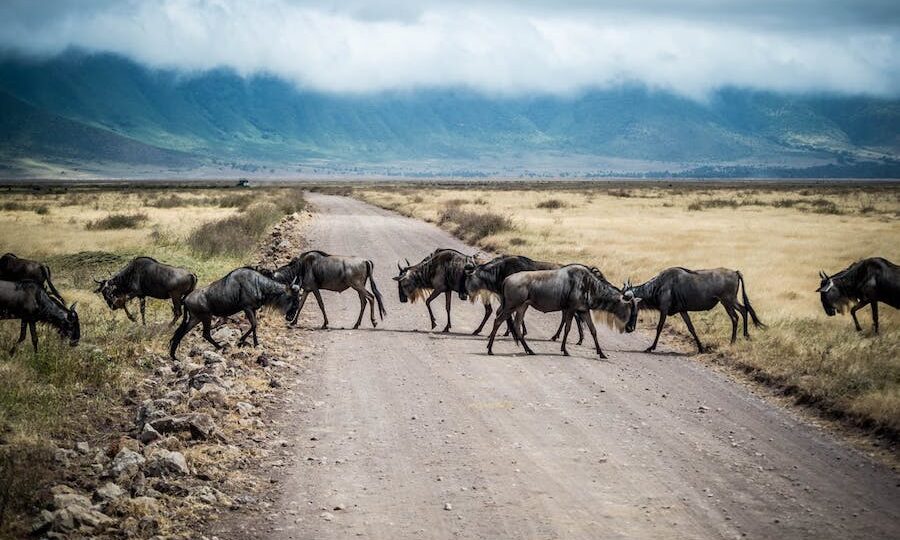Tanzania: A journey through culture and adventure
Tanzania is a country in East Africa, located in the African Great Lakes region. It is bordered by Kenya and Uganda to the north, Rwanda, Burundi, and the Democratic Republic of the Congo to the west, and Zambia, Malawi, and Mozambique to the south. The eastern border is formed by the Indian Ocean. Kilimanjaro, Africa’s highest mountain, is in northeastern Tanzania.
Tanganyika and Zanzibar merged on April 26, 1964, to form the United Republic of Tanganyika and Zanzibar. On October 29 of the same year, the country was renamed the United Republic of Tanzania, combining “Tan” from Tanganyika and “Zan” from Zanzibar.
Tanzania is rich in historical relics, including the ruins of Zanzibar, Bagamoyo, Kilwa, and the Stone Age remains of Ismani and Olduvai Gorge, known as the “cradle of mankind.” This region lies between the Serengeti and Ngorongoro. The Amboni caves and the rock paintings of Kondoa Irangi are also notable destinations for curious tourists. In 1959, Dr. Louis Leakey discovered early human fossils here.
Culture and Traditions
Tanzania has about 126 major ethnic communities, each with its own language, culture, and traditions. National cohesion is partly achieved through the use of Kiswahili, the national language, which fosters interaction among the people. This cultural diversity is showcased in traditional dances, handicrafts such as weaving and pottery, and art forms like the wood carvings of the Makonde ethnic community in southern Tanzania.
The Northern Circuit
Most tourists visit the northern circuit of national parks, which includes the Serengeti, Tanzania’s oldest and most famous national park, and the adjacent Ngorongoro Conservation Area, home to the magnificent Ngorongoro Crater, the largest unbroken caldera in the world. No visit to Tanzania’s northern circuit is complete without a glimpse of Kilimanjaro, Africa’s highest mountain, which can be climbed relatively easily by non-mountaineers.
The northern circuit also features Arusha, Tarangire, and Lake Manyara National Parks, each offering diverse plant, animal, and bird species. Adventurous visitors might consider an overland trip through the Usambara and Pare mountains, as well as Mkomazi Game Reserve.
Parks in Tanzania
Arusha National Park
This park has three distinct zones: the Ngurdoto Crater, the shallow alkaline Momella Lakes, and the densely forested slopes of Mount Meru. Visitors can see a variety of wildlife, including elephants, giraffes, and various bird species.
Kilimanjaro National Park
Mount Kilimanjaro is the highest mountain in Africa at 5,895 meters. It features diverse ecosystems, from rainforests to moorland. The mountain is accessible to climbers year-round, though the best times are from January to March and June to October.
Lake Manyara National Park
This park is known for its lush vegetation and diverse wildlife, including the famous tree-climbing lions. The best time to visit is during the dry season from January to February and June to September.
Ngorongoro Conservation Area
Home to the Ngorongoro Crater, this area features diverse wildlife and stunning views. The crater is rich in flora and fauna, including the endangered black rhino.
Olduvai Gorge
Famous for its early hominid fossils, Olduvai is a significant archaeological site and offers a small museum for visitors.
Serengeti National Park
Covering 14,763 square kilometers, the Serengeti is one of the world’s last great wildlife refuges. It supports a vast number of large mammals and is known for the Great Migration, where millions of wildebeest, zebra, and gazelle traverse the landscape in search of food and water.
Tarangire National Park
Known for its large elephant herds and diverse wildlife, Tarangire is a great place for game viewing, particularly during the dry season.
Zanzibar
Tanzania boasts an 804-kilometer coastline featuring some of Africa’s finest beaches. The serene atmosphere is perfect for relaxation and water sports.
Marine Parks
Kilwa Reserve is one of the few places where the dugong can be seen, alongside other marine parks such as Tanga Coral Gardens and Rufigi Delta.
Offshore Islands
Zanzibar and Pemba are rich in history and culture, with attractions like unique architecture and vibrant traditions. Mafia Island, known for its diving opportunities, offers exceptional deep-sea fishing.
Diving and Snorkeling
Tanzania offers world-class diving opportunities with abundant coral reefs and tropical fish. Many hotels and lodges provide dive courses and equipment rentals.
Fishing
Deep-Sea Fishing
The waters off Tanzania’s coast are rich in big-game fish, including marlin and tuna. Charter services are available from various lodges and hotels.
Inland Fishing
Fishing is a significant activity in rural Tanzania. Fly fishing and lake fishing in areas like Lake Victoria offer unique experiences for visitors. Private companies and local fishermen can arrange trips for anglers.
Tanzania is a destination that promises adventure, culture, and breathtaking natural beauty.


